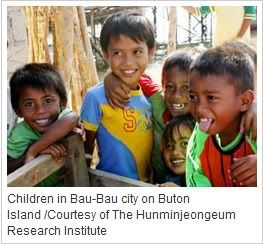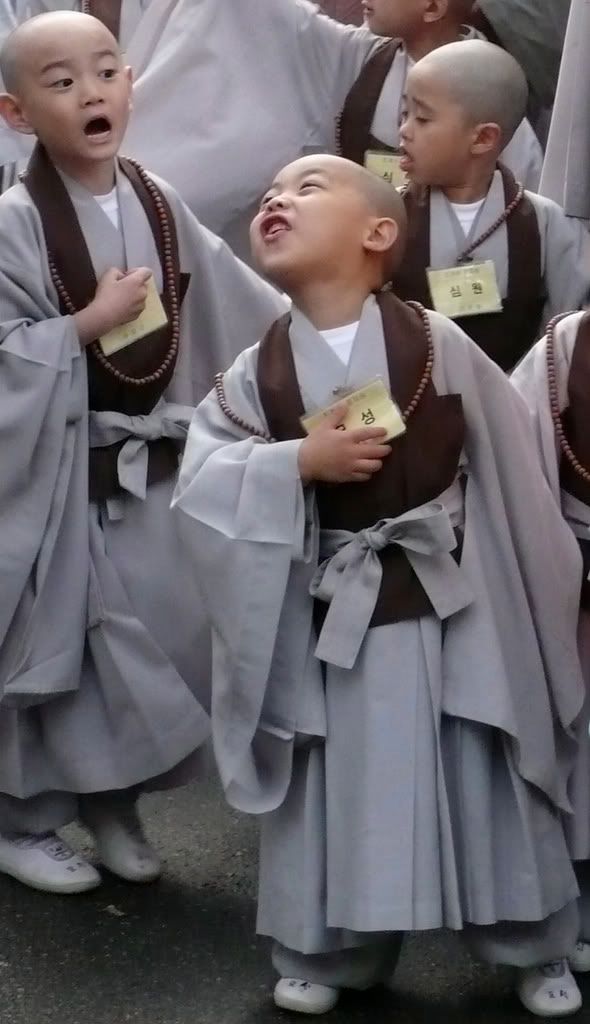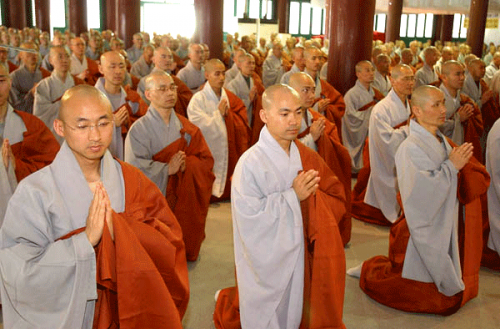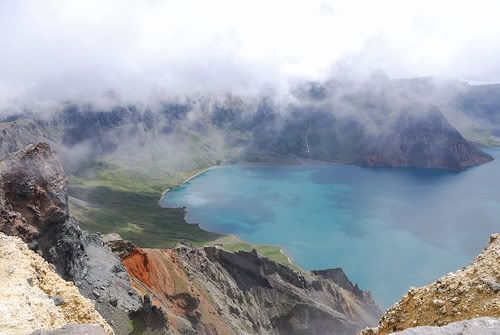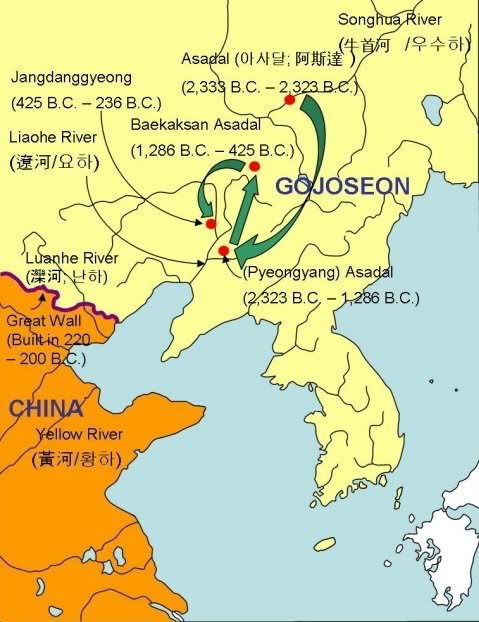I was walking to the laundry room in my apartment when I noticed some big black spot on the door.With closer inspection I realized it was a cicada. It wasn't moving so I assumed it was dead. But when I nudged it, it kinda side-stepped to the left.These insects can have a life span of over 15 years. They spend it mostly underground and spend the last five weeks of their lives above ground to find a mate, mate and then die.In Montreal, we would hear these damn things only on the hottest days of summer. Apparently that's when they are more apt to "sing." In Korea, you hear them all the time for about a month. And then suddenly, silence.
The males have these timbals which are plate-like membranes on the sides of their abdomen that vibrate to emit this shrill ear piercing sound. Uhhhh, I remember staying awake at nights listening to them as a kid. It's like nails scratching on the blackboard. But at least back home they were some distance away but in Seoul they're right at your window or in my case my laundry room. And these guys are loud.
Once, I had one stuck to the screen on my bedroom window. I looked up to see the back end of a big dark bug with veiney wings shaking its butt at me. There was a piece of me that wanted to open the screen and keep it. I can't help but touch. But while I was lying there contemplating taking him in and it would be a him since it's the males that do the "calling" the noise was progressively driving me nuts. Some species of cicadas can reach up to 106 decibals which is like a car horn. So, I got up and flicked at the screen and the chubby cicada just fell away.
Here's a video I found on the life cycle of a cicada.
http://www.youtube.com/watch?v=RYLxxALTfAQ
Friday, August 28, 2009
Monday, August 17, 2009
Little Indonesian Village Adopts Hangul as their Writing
For the first time ever, the Korean alphabet has been adopted as the official script of a small tribe in a foreign country. The Hunminjeongeum Research Institute on Thursday said that the Cia-Cia tribe of Bau-Bau city on Buton Island, located in the southeastern Indonesian province of Sulawesi, has adopted Korean or Hangeul to transcribe its aboriginal language. The Bau-Bau city government on July 21 distributed textbooks written in Hangeul to about 40 elementary schoolchildren in the Sorawolio district, where the Cia-Cia people are concentrated, and began weekly Hangeul classes.
The tribe has a population of about 60,000. Its own language is in danger of extinction as it has no native writing system. The Hunminjeongeum Research Institute signed a memorandum of understanding with Bau-Bau city on the propagation of Hangeul in July of last year, and compiled the textbook in Hangeul. The city is planning to use Hangeul alongside the Roman alphabet on road signs and to publish history and folktale books in Hangeul.
Institute chairman Kim Ju-won said, "We have made several attempts to propagate Hangeul among small tribes in the past. But this is the first time we've signed an MOU with a local government in a foreign country and officially published a Hangeul textbook taught to foreign students." The institute was founded in 2007 to study languages of the world, and to propagate Hangeul among tribes whose native languages are on the brink of extinction due to their lack of writing systems.
Courtesy of the Chosun Ilbo
Tuesday, August 11, 2009
How to Spot a Korean Monk
Spotting a monk in the vast city of Seoul is not difficult. You will occasionally see one asking for psalms on a street corner while tapping on a hollow wooden bell. For hiking enthusiasts going up any hill or mountain in Korea, you would inevitably find yourself near a temple with monks mulling about dressed all in grey.
It isn't clear exactly when Buddhism was introduced to the Korean peninsula but it was brought in by travelling monks from China. It was only after the King's nephew became a martyr of the new religion in 527 AD that Buddhism took a foothold in the Shilla Kingdom in ancient Korea.
When Buddhist monks from India first passed through China, the converted Chinese opted to dress in grey and not the yellow as worn by their Indian teachers. Another modification they chose to make was to cover up the one bare shoulder which would have been scandalous in conservative China. Considered a sign of respect in India, many sub-tropical Buddhist regions such as South East Asia and South Asia had their monks continue baring the one shoulder. That style of dress is more accommodating to the torrid weather but not so for the colder climates of East Asian countries. Although Chinese monks have since adopted yellow among other colours for their robles, Korean monks have stayed true to the neutral grey.
Korean Buddhist monks will normally wear a grey baggy outfit for their everyday working clothes which look somewhat like the traditional men's hanbok (outfit). Sometimes they will add on a dark red outer layer worn off one shoulder imitating the original Indian dress. It is used normally for ceremonial purposes.
Every colour worn by monks from Buddhist countries has some significance in the faith. Yellow is the colour of equanimity or intelligence. Gherva, a kind of burnt brick red worn by ancient philosophers from India, signifies the five elements: fire, earth, water, and wind. And grey is the combination of all colours and the colour of ashes which we will all be in the end.
by Paula Kim
Friday, August 7, 2009
Korean History
Korea has had a long history. Starting from 2,333 B.C, this section follows the history of Korea from the prehistoric age to the present.

The Prehistoric Age
Archaeological findings have indicated that the first settlements on the Korean Peninsula occurred 700,000 years ago.
Gojoseon (2333 - 108 B.C)
According to legend, the mythical figure Dan-gun founded Gojoseon, the first Korean Kingdom, in 2333 B.C. Subsequently, several communities moved from the southern part of Manchuria to the Korean Peninsula.
The Three Kingdoms Period (57 B.C. - A.D. 676)
The Three Kingdoms refers to a period of time (early 4th to mid-7th centuries AD) marked by the struggle of three rival kingdoms: Goguryeo, Baekje, and Silla over the territory spanning the Korean peninsula and part of Northeastern Asia.
Goguryeo
An ancient state of the Korean peninsula, Goguryeo occupied the largest territory among the Three Kingdoms. Founded in 37 BC, Goguryeo prospered on a vast area encompassing the northern part of the Korean peninsula and south-central Manchuria. The kingdom expanded its territory in fierce battles against Chinese kingdoms, but fell to an alliance of Silla and Tang forces in 668 AD.
Silla
One of the ancient states of the Three Kingdoms, Silla originated in the southeastern part of the Korean peninsula. The kingdom lasted for 992 years, from 57 BC to 935 AD. It conquered Baekje and Goguryeo, one after the other, by joining forces with the Tang Empire of China. Following the unification of the Three Kingdoms, The Tang Empire was no longer an ally, but an invader. Hence, Silla joined forces with the people of Goguryeo and Baekje to drive out Tang forces, and founded the first unified state in the history of Korea in the territory south of the Daedonggang River and Wonsanman.
Baekje
One of the three ancient kingdoms, Baekje (18 BC-660 AD) was founded by King Onjo, the son of the King of Goguryeo, in the southwestern part of the Korean peninsula. The kingdom witnessed the florescence of the elegant and delicate Baekje culture, which in particular greatly affected Japanese culture. In 660 AD, Baekje was defeated by the coalition troops of Silla and Tang of China.
The Unified Silla Kingdom and Balhae
The Unified Silla Kingdom (676-935)
The Unified Silla Kingdom promoted the development of culture and arts. Buddhism was at its peak during this period. The Unified Silla Kingdom declined because of contention for supremacy among the noble classes, and was annexed by Goryeo in 935.
Balhae(698-926)
The Balhae Kingdom began to emerge just as the Goguryeo kingdom was on the verge of collapsing. Goguryeo General, Dae Joyeong founded Balhae along with his army of displaced peoples. At one point, Balhae became so powerful that it was able to acquire territories in northern and eastern parts of China. At those times, the Tang Dynasty of China referred to Balhae as 'the strong country by the sea in the east.' The significance of the Balhae Kingdom is greatly inherited from Goguryeo, including the land that it was able to retrieve.

The Goryeo Dynasty (918 - 1392)
The Goryeo Dynasty was established in 918. Buddhism became the state religion during this time and greatly influenced politics and culture. Famous items produced during this time include Goryeo celadon and the Tripitaka Koreana. Jikjisimgyeong, Buddhist scripture printed with the world's first movable metal type developed in Korea during the Goryeo Dynasty, is at least 78 years older than the first Gutenberg Bible.
The Goryeo Dynasty's supremacy decreased gradually in the latter half of the 14th century.

The Joseon Dynasty (1392 - 1910)
The Joseon Dynasty came to power at the end of the 14th century. Confucianism became the state ideology and exerted a massive influence over the whole of society. The Joseon Dynasty produced Hangeul, the Korean alphabet, which was invented in 1443 by King Sejong. Starting with the Japanese invasion in 1592, invasions from foreign groups caused the decline of the Joseon Dynasty. More info:
1. The Early Joseon Dynasty
The Japanese Colonial Period (1910 - 1945)
In 1876, the Joseon Dynasty was forced to adopt an open-door policy regarding Japan. The Japanese annexation of Korea began in 1910, and continued to be under Japanese colonial rule until the surrender of Japan in 1945, which ended World War II.
2. The Late Joseon Dynasty
Establishment of the Korean Government (1945-1948)
Korea was liberated from Japanese oppression on August 15, 1945, but it soon faced the tragic division of the North and South along the 38th parallel. Both regions were placed under temporary military rule by the U.S. and Soviet armies. In 1948 with the help of the United Nations, South Korea held an election on May 10th and elected Dr. Rhee Syngman president. On August 15th of that same year, an official declaration was made about the birth of the South Korean government. On the other hand, North Korea formed the Provisional People's Committee for North Korea, led by Kim Il-sung, on February 1946 and on September 9, 1948, the Democratic People's Republic of Korea was officially founded.
The Korean War (1950-1953)
In the early hours of June 25, 1950, North Korea attempted a forcible unification of the two Koreas by invading South Korea and stepping over the 38th parallel. In response, military help from over 16 nations helped defend South Korea against the threat of communism under the leadership of General Douglas MacArthur. China and the Soviet Union lent their military might to North Korea. The war raged on for over 3 years until a peace agreement was signed at Panmunjeon on July 27, 1953. Not only did the war ravage the peninsula, it heightened hostile sentiments between the North and South making reunification problematic.

The Governments After the War (1954-Now)
The Rhee Syngman government focused on an anti-communist approach to government in 1954, but in 1960 the government collapsed under heavy anti-government student demonstrations on April 19.
In a military coup, Park Chung-hee took office in 1963. He ruled with an iron fist for the next 17 years. He started his 'Saemaeul Undong' (New Community Movement) campaign in an effort to modernize Korea. Though it brought about rapid modernization and economic returns, his regime pushed back the democracy and human rights movement. And with an increasingly disatisfied constituency over his harsh policies and extended rule, Park Chung-hee's life ended in an assassination 9 years later.
The country went on to see more progress in the subsequent years. In 1988, Roh Tae-Woo came to office. His government hosted the 1988 Seoul Olympics and introduced Korea into the UN in 1991.
The next president, Kim Dae-Jung won the Nobel Peace prize in 2000 for his work with reunifying with North Korea. President Kim Dae-jung and Kim Jeong-il (the former North Korean leader) took early steps to explore reunification, improving the economy, and solving the problem of separated families. The family reunification program, started in 1985 and continues to this day. In 1998, South Korean citizens began to be admitted into North Korea to tour the Geumgangsan Diamond Mountains.
The aim of the last president, a former lawyer, Rho Moo-hyun was to achieve economic growth, and develop Korea as the hub of Asia with a more democratic style of leadership.
*More info on Korean history
*Chronological table of Korea's history

The Prehistoric Age
Archaeological findings have indicated that the first settlements on the Korean Peninsula occurred 700,000 years ago.
Gojoseon (2333 - 108 B.C)
According to legend, the mythical figure Dan-gun founded Gojoseon, the first Korean Kingdom, in 2333 B.C. Subsequently, several communities moved from the southern part of Manchuria to the Korean Peninsula.
The Three Kingdoms Period (57 B.C. - A.D. 676)
The Three Kingdoms refers to a period of time (early 4th to mid-7th centuries AD) marked by the struggle of three rival kingdoms: Goguryeo, Baekje, and Silla over the territory spanning the Korean peninsula and part of Northeastern Asia.
Goguryeo
An ancient state of the Korean peninsula, Goguryeo occupied the largest territory among the Three Kingdoms. Founded in 37 BC, Goguryeo prospered on a vast area encompassing the northern part of the Korean peninsula and south-central Manchuria. The kingdom expanded its territory in fierce battles against Chinese kingdoms, but fell to an alliance of Silla and Tang forces in 668 AD.
Silla
One of the ancient states of the Three Kingdoms, Silla originated in the southeastern part of the Korean peninsula. The kingdom lasted for 992 years, from 57 BC to 935 AD. It conquered Baekje and Goguryeo, one after the other, by joining forces with the Tang Empire of China. Following the unification of the Three Kingdoms, The Tang Empire was no longer an ally, but an invader. Hence, Silla joined forces with the people of Goguryeo and Baekje to drive out Tang forces, and founded the first unified state in the history of Korea in the territory south of the Daedonggang River and Wonsanman.
Baekje
One of the three ancient kingdoms, Baekje (18 BC-660 AD) was founded by King Onjo, the son of the King of Goguryeo, in the southwestern part of the Korean peninsula. The kingdom witnessed the florescence of the elegant and delicate Baekje culture, which in particular greatly affected Japanese culture. In 660 AD, Baekje was defeated by the coalition troops of Silla and Tang of China.
The Unified Silla Kingdom and Balhae
The Unified Silla Kingdom (676-935)
The Unified Silla Kingdom promoted the development of culture and arts. Buddhism was at its peak during this period. The Unified Silla Kingdom declined because of contention for supremacy among the noble classes, and was annexed by Goryeo in 935.
Balhae(698-926)
The Balhae Kingdom began to emerge just as the Goguryeo kingdom was on the verge of collapsing. Goguryeo General, Dae Joyeong founded Balhae along with his army of displaced peoples. At one point, Balhae became so powerful that it was able to acquire territories in northern and eastern parts of China. At those times, the Tang Dynasty of China referred to Balhae as 'the strong country by the sea in the east.' The significance of the Balhae Kingdom is greatly inherited from Goguryeo, including the land that it was able to retrieve.

The Goryeo Dynasty (918 - 1392)
The Goryeo Dynasty was established in 918. Buddhism became the state religion during this time and greatly influenced politics and culture. Famous items produced during this time include Goryeo celadon and the Tripitaka Koreana. Jikjisimgyeong, Buddhist scripture printed with the world's first movable metal type developed in Korea during the Goryeo Dynasty, is at least 78 years older than the first Gutenberg Bible.
The Goryeo Dynasty's supremacy decreased gradually in the latter half of the 14th century.

The Joseon Dynasty (1392 - 1910)
The Joseon Dynasty came to power at the end of the 14th century. Confucianism became the state ideology and exerted a massive influence over the whole of society. The Joseon Dynasty produced Hangeul, the Korean alphabet, which was invented in 1443 by King Sejong. Starting with the Japanese invasion in 1592, invasions from foreign groups caused the decline of the Joseon Dynasty. More info:
1. The Early Joseon Dynasty
The Japanese Colonial Period (1910 - 1945)
In 1876, the Joseon Dynasty was forced to adopt an open-door policy regarding Japan. The Japanese annexation of Korea began in 1910, and continued to be under Japanese colonial rule until the surrender of Japan in 1945, which ended World War II.
2. The Late Joseon Dynasty
Establishment of the Korean Government (1945-1948)
Korea was liberated from Japanese oppression on August 15, 1945, but it soon faced the tragic division of the North and South along the 38th parallel. Both regions were placed under temporary military rule by the U.S. and Soviet armies. In 1948 with the help of the United Nations, South Korea held an election on May 10th and elected Dr. Rhee Syngman president. On August 15th of that same year, an official declaration was made about the birth of the South Korean government. On the other hand, North Korea formed the Provisional People's Committee for North Korea, led by Kim Il-sung, on February 1946 and on September 9, 1948, the Democratic People's Republic of Korea was officially founded.
The Korean War (1950-1953)
In the early hours of June 25, 1950, North Korea attempted a forcible unification of the two Koreas by invading South Korea and stepping over the 38th parallel. In response, military help from over 16 nations helped defend South Korea against the threat of communism under the leadership of General Douglas MacArthur. China and the Soviet Union lent their military might to North Korea. The war raged on for over 3 years until a peace agreement was signed at Panmunjeon on July 27, 1953. Not only did the war ravage the peninsula, it heightened hostile sentiments between the North and South making reunification problematic.

The Governments After the War (1954-Now)
The Rhee Syngman government focused on an anti-communist approach to government in 1954, but in 1960 the government collapsed under heavy anti-government student demonstrations on April 19.
In a military coup, Park Chung-hee took office in 1963. He ruled with an iron fist for the next 17 years. He started his 'Saemaeul Undong' (New Community Movement) campaign in an effort to modernize Korea. Though it brought about rapid modernization and economic returns, his regime pushed back the democracy and human rights movement. And with an increasingly disatisfied constituency over his harsh policies and extended rule, Park Chung-hee's life ended in an assassination 9 years later.
The country went on to see more progress in the subsequent years. In 1988, Roh Tae-Woo came to office. His government hosted the 1988 Seoul Olympics and introduced Korea into the UN in 1991.
The next president, Kim Dae-Jung won the Nobel Peace prize in 2000 for his work with reunifying with North Korea. President Kim Dae-jung and Kim Jeong-il (the former North Korean leader) took early steps to explore reunification, improving the economy, and solving the problem of separated families. The family reunification program, started in 1985 and continues to this day. In 1998, South Korean citizens began to be admitted into North Korea to tour the Geumgangsan Diamond Mountains.
The aim of the last president, a former lawyer, Rho Moo-hyun was to achieve economic growth, and develop Korea as the hub of Asia with a more democratic style of leadership.
*More info on Korean history
*Chronological table of Korea's history
Monday, August 3, 2009
First Arrival - Part 1
I had just completed my contract working for the Canadian government in Sri Lanka. Since I had never been to South Korea I thought this would be a good time to visit before I jumped into a full-time job back home in dear ol'Canada. Though I would've liked to stay in Sri Lanka a little longer, there were just no viable jobs there for expats.
Korea was so close to Sri Lanka it was only a 5 hour flight, unlike that horrendous 20 hour flight I took from Montreal. Besides, I was very curious to see the place my parents had grown up. When my parents had left Korea, the country was still under a harsh dictatorship and in great turmoil. Anyone who wanted to leave the country had to leave all their possessions behind, meaning their money and valuables. So when my parents arrived to Canada, they literally had nothing in their pockets.
My parents spoke from time to time about how it was growing up in Korea. Although my mother was mostly unaffected by it, my father had grown up during the Japanese occupation. He wouldn't really elaborate too much but he can still speak a little Japanese. This was all he could speak in school as a child. He had occasion to speak with Japanese students that came to our universities and would ask for directions. My eyes would always kind of glaze over when they would get into a conversation.
When I got off the plane at the Incheon airport I remember how I found the quality of the air palpably stifling. Lucky for me I arrived during the "yellow sand" storm which occurs every spring. My uncle and cousin picked me up from the airport. I was supposed to stay with them for about 6 months although I doubted I would stay that long. Turned out I was right...but only aobut staying with my cousins.
Korea was so close to Sri Lanka it was only a 5 hour flight, unlike that horrendous 20 hour flight I took from Montreal. Besides, I was very curious to see the place my parents had grown up. When my parents had left Korea, the country was still under a harsh dictatorship and in great turmoil. Anyone who wanted to leave the country had to leave all their possessions behind, meaning their money and valuables. So when my parents arrived to Canada, they literally had nothing in their pockets.
My parents spoke from time to time about how it was growing up in Korea. Although my mother was mostly unaffected by it, my father had grown up during the Japanese occupation. He wouldn't really elaborate too much but he can still speak a little Japanese. This was all he could speak in school as a child. He had occasion to speak with Japanese students that came to our universities and would ask for directions. My eyes would always kind of glaze over when they would get into a conversation.
When I got off the plane at the Incheon airport I remember how I found the quality of the air palpably stifling. Lucky for me I arrived during the "yellow sand" storm which occurs every spring. My uncle and cousin picked me up from the airport. I was supposed to stay with them for about 6 months although I doubted I would stay that long. Turned out I was right...but only aobut staying with my cousins.
The Legend of Dan-gun

As evidence to their predominantly shamanistic past the legend of Dan-gun is retold to each new generation in Korean society. Descended from heaven, Dan-gun is considered the progenitor of the Korean people. Although regarded as a myth, there has been some dispute to whether this god-character really existed. Some recent finds have questioned this very question.
The story goes that Hwan-ung, Dan-gun's father, was sent from the heavens to Taebaek Mountain which lies between the border of North Korea and Manchuria to rule over the world. He named the area "Shin-shi," the City of God. Along with his ministers Clouds, Rain and Wind, Hwan-ung provided humans with laws, moral principles, and educated them with the knowledge of arts, medicine and agriculture. He heard the pleas of a bear and tiger desperately wanting to become human. Taking pity on them Hwan-ung gave them 20 cloves of garlic and a bag of mugwort. They were to eat all of them and stay out of the sun for 100 days. The tiger gave up after a short while but the bear ate everything in the time allotted. After 21 days, the bear turned into a woman.
The story goes that Hwan-ung, Dan-gun's father, was sent from the heavens to Taebaek Mountain which lies between the border of North Korea and Manchuria to rule over the world. He named the area "Shin-shi," the City of God. Along with his ministers Clouds, Rain and Wind, Hwan-ung provided humans with laws, moral principles, and educated them with the knowledge of arts, medicine and agriculture. He heard the pleas of a bear and tiger desperately wanting to become human. Taking pity on them Hwan-ung gave them 20 cloves of garlic and a bag of mugwort. They were to eat all of them and stay out of the sun for 100 days. The tiger gave up after a short while but the bear ate everything in the time allotted. After 21 days, the bear turned into a woman.
Ungnyeo, the bear-woman made offerings to Hwan-ung as thanks but was lonely for companionship and prayed for a child under a sandalwood tree. Touched by her loneliness, Hwan-ung married her and soon blessed her with a son. She named him Dan-gun meaning sandalwood. He grew to be a wise leader and established the kingdom of Go-Joseon in Pyeongyang now in North Korea. Later on he returned to Taebaek Mountain and became a god. North Korean officials claim they have found the burial site of Dan-gun in the region.
by Paula Kim
Subscribe to:
Comments (Atom)




